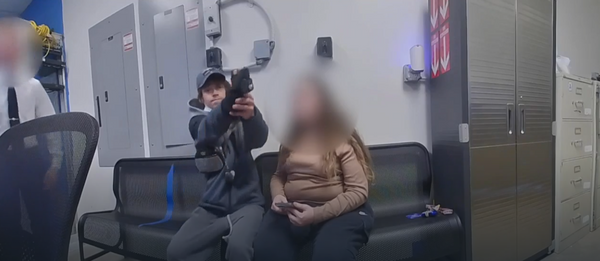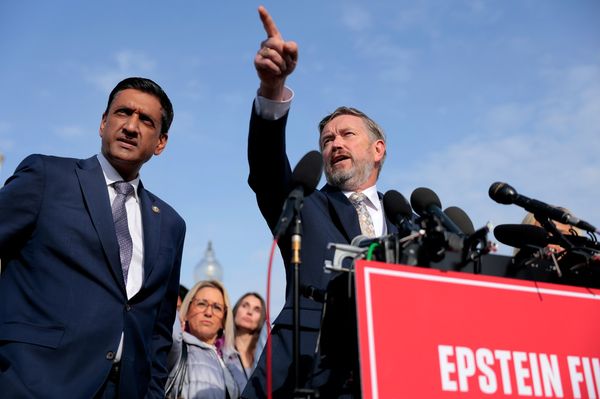Violent crime in London remains a major cause for concern as latest figures show the capital still accounts for almost a third of knife offences in England and Wales.
An interactive map created by The Standard, using data from the Office for National Statistics (ONS), shows the scale of violent crime in each borough across the capital.
The issue of violent crime in London has been brought into the spotlight once more following a string of horrific assaults, including a triple stabbing in Uxbridge and a knife attack on a young woman in a park in Islington.
Despite efforts by the Metropolitan Police, data published by the ONS highlight the battle ahead for Commissioner Sir Mark Rowley’s “rapidly shrinking” force.
Some 51,527 knife crime offences were recorded across England and Wales in the 12 months to June, 15,689 of them in London. That compares to 15,707 in the capital last year, which the ONS says is no percentage change.
Around 949,420 crimes had been reported to the Met and City of London Police, with only the latter force seeing a year-on-year reduction of five per cent.
The city saw 101 homicides (down six per cent), 65,215 violence with injury offences (down 14 per cent), 27,344 sexual offences (up 11 per cent), 33,752 robberies (down four per cent), 465,085 thefts (down four per cent), 33,491 burglaries (down eight per cent) and 96,227 shoplifting reports (up 37 per cent).
Where are the most violent crimes committed in London?
Croydon (3,214) had the highest number of “violence with injuries” (ranging from actual bodily harm to life-threatening assaults) in year to June 2025, followed by Westminster (3,006), Lambeth (2,788), Newham 2,671), Brent 2,592, Greenwich (2,588), Lewisham (2,546), Southwark (2,532), Ealing (2,529) and Tower Hamlets (2,516).
Richmond-upon-Thames (781) had the fewest number of violence with injury offences, followed by Kingston upon Thames (875), Merton (1,120), Harrow (1,207) and Sutton (1,296).
According to City Hall, the number of murders committed in the first nine months of 2025 was lower than any year since monthly homicide records began in 2003.
Last year, London recorded the fewest killings of under-25s for more than two decades and the fewest of teenagers since 2012 .
Mayor Sir Sadiq Khan added there were 1,154 fewer knife crime offences in the 12 months to August 2025 - a seven per cent drop and 10 per cent reduction in hospital admissions of under-25s for knife assaults.
The Met has launched a proactive approach to tackling serious violence with specialist teams disrupting more organised crime groups, tackling drug dealing and county lines, while safeguarding those being exploited.
This has led to thousands of arrests and the seizure of stockpiles of deadly weapons.
Billy Gazard, of the ONS, said the data for police-recorded crime “paints a mixed picture”, adding: “Homicide and offences involving knives and guns have all fallen in the past year.
“While shoplifting continues to rise year on year, there are signs the rate of increase in reporting of these offences is slowing.”
Responding to the figures, crime and policing minister Sarah Jones added: “This Government is making real progress in protecting vulnerable young people, homicide rates have hit their lowest levels since the 1970s and knife crime is down after just one year in office.
“But we know that any life lost is one too many and we are not complacent as we seek to halve knife crime over the next decade.”

She added: “We also know that the levels of shop theft and street crime that this Government has inherited are utterly unacceptable.”
Kaya Comer-Schwartz, deputy mayor for Policing and Crime, said: “The latest ONS statistics show that violence with injury has fallen 14 per cent in London and that you are less likely to be a victim of violence in the capital that the rest of the country.
“The evidence shows that our approach to tackling crime and its complex causes is working - with homicides down to their lowest levels since 2003 and robbery rates falling.
“But we’re clear there is still much more work to do. That's why we are working closely with the Met to step up action to tackle mobile phone crime, shoplifting and antisocial behaviour.
“The Mayor and I will continue to do all we can to bring crime down. This includes providing record funding for the Met police, increasing the number of neighbourhood police officers in hotspot areas, and tackling the causes of crime through our Violence Reduction Unit as we continue to build a safer London for everyone.”
Deputy Assistant Commissioner Matt Ward added: “Thanks to the work of our dedicated officers and staff, we’re bearing down on violence and have seen a sustained reduction in homicide.
“We’re targeting those whose reckless actions risk the safety of our city, dismantling organised crime groups and diverting people away from criminality with support and help from partners and our communities.
“These are all positive steps forward in our mission to make London safer, but we won’t stop here. No family should never have to bury a loved one and we’ll continue to do everything we can to keep ensuring fewer people are impacted by the scourge of violence and fewer lives are lost.”
Chief executive of Victim Support, Katie Kempen, said while crime levels remain lower than a decade ago, millions of people continue to be harmed and the impact on victims is “life-changing”.
She added: “The sharp rise in fraud cases is particularly alarming.
“These crimes don’t just drain bank accounts – they destroy trust, damage mental health and leave victims feeling ashamed and alone.”







